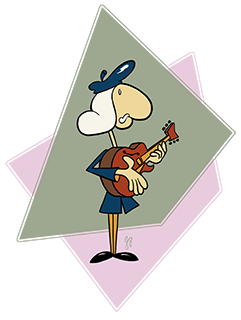| harmonic_minor_scale_and_diatonic_arpeggios.pdf |
For the novice jazzer, it is less useful to understand this material for compositional movements, than to just be aware of the arpeggios that are buried within this scale. While the Harmonic Minor is a great choice for the Min-Maj7 chords and sounds in tunes like Nica's Dream and Nardis, the harmonic minor is probably most used in jazz for altered sounds -- using the Phrygian Dominant over a #11 chord or the Ultra-Locrian for tri-tone colors over a functional Dominant. Just learning the harmonic scale will give you access to these sounds, but being able to pick out all the arpeggios within it can give you a richer starting point for your lines.
Another key use of the Harmonic Minor in jazz is the 'Barry Harris' approach. Barry Harris has a whole cosmology of scales and tones that starts with chromatics, splits into diminished and ends with sixth chords. The 'Barry Harris' scale -- the Major#5 -- is really the third mode of the Harmonic Minor in this PDF. Check out his 'Sixth-to-Diminished' theory which is at the heart of his teachings. If you act as if the Third Mode of the Harmonic Minor is the 'One' chord for Major tunes, you can develop a unique perspective into the tunes of the Swing and BeBop era. Either way, if you are familiar with the arpeggios in the Harmonic Minor and Melodic Minor scales, you will be able to spot them when transcribing the lines of Charlie Parker and other boppers when they go 'outside' the harmony.

 RSS Feed
RSS Feed
